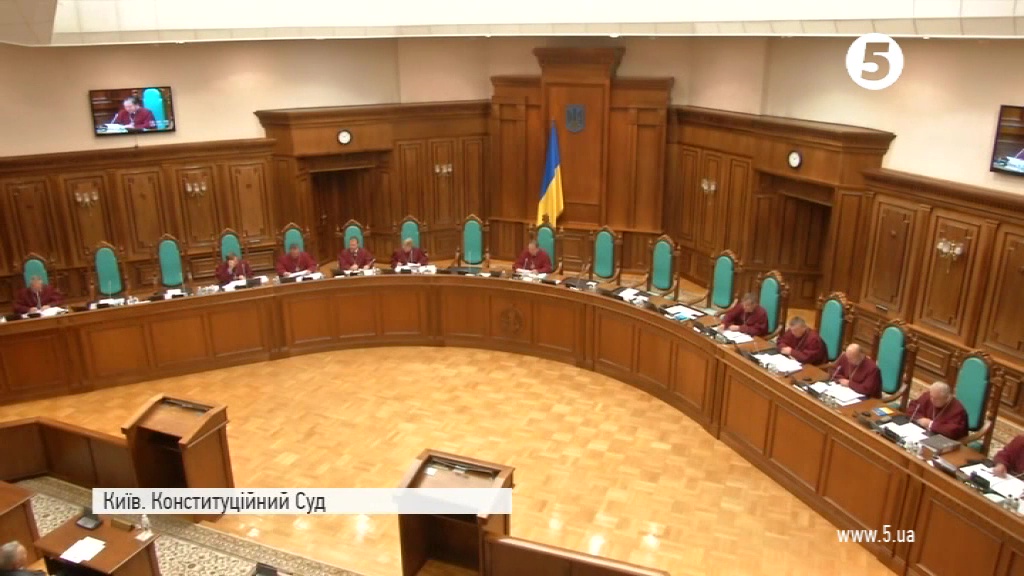Ukraine’s judiciary remains both the most reformed and unreformed area in Ukraine. While the judiciary was always on the agenda for politicians and there have been several attempts to reform it, the political will to render the changes irreversible has been lacking. As a result, the courts have turned into Ukraine’s main generator of news stories.
Recently, the Constitutional Court ruled the liquidation of the old Supreme Court of Ukraine unconstitutional. Not only did it create a legal conflict, but it again raised the question of whether reforms are moving forwards or backwards.
Constitutional Court decision creates Supreme Court legal conflict
The Constitutional Court ruled that an ordinary law could not alone liquidate the court. Therefore, its provisions were recognized as unconstitutional. With this step, the Constitutional Court left the old Supreme Court of Ukraine and the new Supreme Court as legal entities, with rulings from both institutions considered legal. Mykhailo Zhernakov, the Head of the DEJURE Foundation, explains that there are 191 judges in the new Supreme Court and nine in the old one,“Now only the judges of the new Supreme Court can administer justice. The Parliament has to decide how to transfer the judges of the old Supreme Court of Ukraine to the new one. After amending the law, the judges of the old Supreme Court will be able to administer justice as well. Wherein the total number of the judges of the Supreme Court (new and old) will be equal to the limit of 200 as defined by the law,” he said.However, Volodymyr Zelenskyy’s new judicial reform envisages reducing the Supreme Court judges to as low as 100 after the commission for the selection of judges is formed.
Lifelong allowances for judges
The same Constitutional Court order also restored lifelong allowances for all the retired judges. It means that the judges who rejected or avoided reform or the ones who work in the occupied territories will receive the same compensation as those judges who went through the reform. Previously, the law foresaw increasing allowances, but only for those judges who passed the qualification assessment envisaged by the reform, and administered justice during at least three years thereafter. A significant number of the judges refused to take part in the assessment and resigned. The level of allowances could not have been increased and was defined by the law. Zhernakov explains that the Constitutional Court recognized that all the judges had equal status no matter whether they had resigned or not. Therefore the level of allowances should be equal for all judges, including those who did not pass the assessment, and those who resigned before the constitutional changes which launched the reform in 2016 were passed,“The decision of the Constitutional Court will significantly influence state expenditure. Thousands of retired judges will have to be compensated with the difference in amounts for four years. The total amount of payment depends on many components. Therefore, some time will be needed for calculating it.”Roman Kuibida, an expert in the judicial group Reanimation Package of Reforms, expects an increasing burden on the taxpayer because of the provision,
“Additionally, such an approach will induce many judges to resign now. What is the point in working for three years for them? And this will lead to an even more severe labor shortage in the judiciary. And in the near future, this problem is unlikely to be solved.”Zhernakov adds that such life allowances will be provided even for the judges who worked within Ukraine’s judicial system previously and now work as judges for the so-called “LNR” and “DNR” republics in the occupied Donbas.
The future of judicial reform
According to the expert, the decision on the Supreme Court of Ukraine itself will not have a decisive influence on the reform. However, so far the Constitutional Court is considering another appeal on recognizing Volodymyr Zelenskyy’s judicial reform as unconstitutional.
- The most preferable among them foresees full reform and the increase of GDP by 6% annually. It will lead to the population becoming richer by 60% in 20 years and Ukraine reaching today’s level of Poland by approximately 2038.
- The second scenario foresees partial reforms, including maintaining the gap in the judiciary, the GDP increasing by 4%, which will make the population richer by 20%.
- According to the third scenario, there will be a rollback of the reforms and population becoming 20% poorer in 20 years.
Read also:
- Despite second attempt at judicial reform, political decisions rule Ukrainian courts
- Recent outrageous decisions of Ukrainian courts prove Zelenskyy inherits limping judicial system
- Judicial reform 2.0: Zelenskyy comes with initiatives only partly supported by society
- Poroshenko’s judicial reform is over, long live Zelenskyy’s judicial reform
- Ukraine launches large-scale reform for its post-Soviet prosecutor’s offices system
- Ukraine’s judiciary reform: 5 things to know | #UAreforms
- Five years after Euromaidan, 227 judges who persecuted activists keep their seats
- Overloaded Ukrainian courts obstructing justice in top corruption cases





